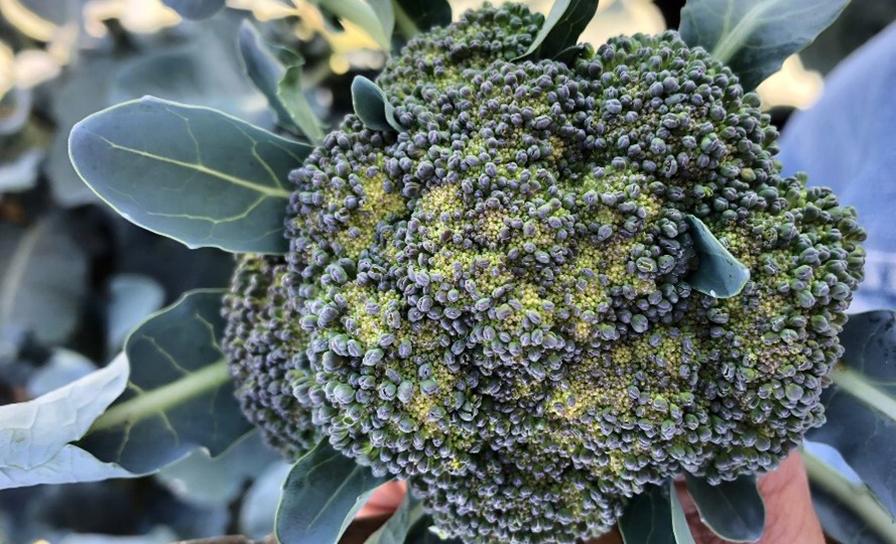Use Irrigation To Help Protect Cool Vegetable Crops in Heat Waves

One example of heat damage to cool vegetable crops includes uneven bead sizes on maturing broccoli crowns.
Photo by Richard Smith
The news has been filled with stories about excessive heat and high temperatures this summer. Luckily, vegetable production areas of the central coast of California, such as the Salinas Valley, have been spared extreme heat so far this season, but at some point, temperatures are likely to spike upward. Heat waves have become a recurring phenomenon in the Salinas Valley, especially in late summer.
“Cool” is key to growing cool-season vegetables such as lettuce, broccoli, and cabbage. These crops do best at temperatures in the range of 60°F to 70°F. Heat can cause immediate damage to plant tissue when the temperature of the plant surfaces become too hot and cause cells to die. In addition, sustained high temperatures can affect plant growth and development.
In the past two years, excessive heat stress in lettuce grown in the Salinas Valley has made plants more susceptible to infection from pythium wilt (Pythium uncinulatum). These types of infections were particularly evident after heat spells in 2020 and 2022.
How to Keep Crops Cool
One approach to keeping crops cool is supplying enough water to maximize evapotranspiration (ET). The process of evaporating water cools the surfaces of leaves and soil. When crops are short on moisture and begin to experience water stress, leaf stomates will close during the hottest period of the day (11 a.m. to 4 p.m.) resulting in less ET and a rise in the temperature of the plant tissue. If leaves and other plant parts become too hot, they may become damaged or scorched.
Since most farms have a limited capacity to irrigate crops, it can be challenging to assure that each field has adequate soil moisture.
A good strategy is to irrigate just enough to refill the soil profile to the rooting depth of the crop. Estimating the cumulative crop ET since the last irrigation can guide how long to irrigate. Reference ET values during a hot spell can greatly increase ET, so check your local weather data. The national weather service also provides estimates of forecasted reference evapotranspiration for the U.S. at Digital.Weather.gov.
During a heat spell in the Salinas Valley, applying 0.25 to 0.3 inches for each day since the last irrigation for a mature lettuce crop is usually a good rule of thumb as long as the total does not exceed the water-holding capacity (WHC) of the soil.
To prioritize which fields to irrigate, consider the developmental stage of the crop, the rooting depth, as well as the WHC and existing moisture level of the soil.
Young plants that have small leaf canopies will have less ET demand than older plants with large canopies. A lettuce crop near maturity with a high ET demand, growing on a sandy-textured soil that is getting dry, should probably be irrigated sooner than a young cabbage crop with less ET demand that’s growing on a silt loam soil that is still moist.
Recent field operations are another consideration for prioritizing which fields to irrigate. A crop that was recently transplanted may need to be irrigated first but may not need a long irrigation to re-saturate the soil around the roots. A crop that was just cultivated may have pruned roots and less ability to uptake soil moisture, and therefore, may need water soon to prevent wilting under hot conditions.










